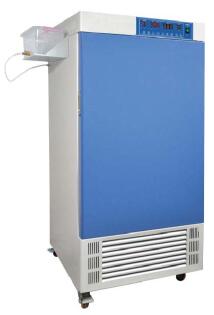santacruz PCGF6 (E-15) 抗体*
- 产品型号: SC-160649
- 简单描述
- santacruz PCGF6 (E-15) 抗体*Epitope: Internal (h) Applications: WB, IF, ELISA Species: m, r, hIsotype: goat IgG
详细介绍
santacruz PCGF6 (E-15) 抗体*
BACKGROUND
Polycomb group (PcG) proteins form multiprotein complexes that regulate
expression patterns of developmental and cell proliferation genes. Several
members of the PcG contain ring finger domains and are identified as a subclass
of RING finger proteins. The RING-type zinc finger motif is present in a
number of viral and eukaryotic proteins and is made of a conserved cysteinerich
domain that is able to bind two zinc atoms. Proteins that contain the
RING-type zinc finger conserved domain are generally involved in the ubiquitination
pathway of protein degradation. PCGF6 (polycomb group ring finger
6), also known as MBLR or RNF134, is a 350 amino acid nuclear protein
that is ubiquitously expressed and contains one RING-type zinc finger. PCGF6
acts as a transcriptional repressor and regulates the level of histone
H3K4Me3 by activating SmcY histone demethylase. PCGF6 exists as two
alternatively spliced isoforms.
REFERENCES
1. Kanno, M., Hasegawa, M., Ishida, A., Isono, K. and Taniguchi, M. 1995.
Mel-18, a Polycomb group-related mammalian gene, encodes a transcriptional
negative regulator with tumor suppressive activity. EMBO J. 14:
5672-5678.
2. Satijn, D.P., Gunster, M.J., van der Vlag, J., Hamer, K.M., Schul, W.,
Alkema, M.J., Saurin, A.J., Freemont, P.S., van Driel, R. and Otte, A.P.
1997. RING1 is associated with the polycomb group protein complex and
acts as a transcriptional repressor. Mol. Cell. Biol. 17: 4105-4113.
3. Joazeiro, C.A. and Weissman, A.M. 2000. RING finger proteins: mediators
of ubiquitin ligase activity. Cell 102: 549-552.
4. Akasaka, T., Takahashi, N., Suzuki, M., Koseki, H., Bodmer, R. and Koga, H.
2002. MBLR, a new RING finger protein resembling mammalian Polycomb
gene products, is regulated by cell cycle-dependent phosphorylation. Genes
Cells 7: 835-850.
5. Tuckfield, A., Clouston, D.R., Wilanowski, T.M., Zhao, L.L., Cunningham,
J.M. and Jane, S.M. 2002. Binding of the RING polycomb proteins to specific
target genes in complex with the grainyhead-like family of developmental
transcription factors. Mol. Cell. Biol. 22: 1936-1946.
6. Online Mendelian Inheritance in Man, OMIM™. 2003. Johns Hopkins
University, Baltimore, MD. MIM Number: 607816. World Wide Web URL:
http://www.ncbi.nlm.nih.gov/omim/
7. Moore, R. and Boyd, L. 2004. Analysis of RING finger genes required for
embryogenesis in C. elegans. Genesis 38: 1-12.
8. Yang, Y., Lorick, K.L., Jensen, J.P. and Weissman, A.M. 2005. Expression
and evaluation of RING finger proteins. Meth. Enzymol. 398: 103-112.
9. Lee, M.G., Norman, J., Shilatifard, A. and Shiekhattar, R. 2007. Physical and
functional association of a trimethyl H3K4 demethylase and Ring6a/MBLR,
a polycomb-like protein. Cell 128: 877-887.
STORAGE
Store at 4° C, **DO NOT FREEZE**. Stable for one year from the date of
shipment. Non-hazardous. No MSDS required.
CHROMOSOMAL LOCATION
Genetic locus: PCGF6 (human) mapping to 10q24.33; Pcgf6 (mouse) mapping
to 19 C3.
SOURCE
PCGF6 (E-15) is an affinity purified goat polyclonal antibody raised against a
peptide mapping within an internal region of PCGF6 of human origin.
PRODUCT
Each vial contains 200 μg IgG in 1.0 ml of PBS with < 0.1% sodium azide
and 0.1% gelatin.
Blocking peptide available for competition studies, sc-160649 P, (100 μg
peptide in 0.5 ml PBS containing < 0.1% sodium azide and 0.2% BSA).
APPLICATIONS
PCGF6 (E-15) is recommended for detection of PCGF6 of mouse, rat and
human origin by Western Blotting (starting dilution 1:200, dilution range
1:100-1:1000), immunofluorescence (starting dilution 1:50, dilution range
1:50-1:500) and solid phase ELISA (starting dilution 1:30, dilution range
1:30-1:3000); non cross-reactive with PCGF1, PCGF3 or PCGF5.
Suitable for use as control antibody for PCGF6 siRNA (h): sc-90663, PCGF6
siRNA (m): sc-152109, PCGF6 shRNA Plasmid (h): sc-90663-SH, PCGF6
shRNA Plasmid (m): sc-152109-SH, PCGF6 shRNA (h) Lentiviral Particles:
sc-90663-V and PCGF6 shRNA (m) Lentiviral Particles: sc-152109-V.
Molecular Weight of PCGF6: 60 kDa.
RECOMMENDED SECONDARY REAGENTS
To ensure optimal results, the following support (secondary) reagents are
recommended: 1) Western Blotting: use donkey anti-goat IgG-HRP: sc-2020
(dilution range: 1:2000-1:100,000) or Cruz Marker™ compatible donkey
anti-goat IgG-HRP: sc-2033 (dilution range: 1:2000-1:5000), Cruz Marker™
Molecular Weight Standards: sc-2035, TBS Blotto A Blocking Reagent:
sc-2333 and Western Blotting Luminol Reagent: sc-2048. 2) Immunofluorescence:
use donkey anti-goat IgG-FITC: sc-2024 (dilution range: 1:100-
1:400) or donkey anti-goat IgG-TR: sc-2783 (dilution range: 1:100-1:400)
with UltraCruz™ Mounting Medium: sc-24941.
RESEARCH USE
For research use only, not for use in diagnostic procedures.
PROTOCOLS















